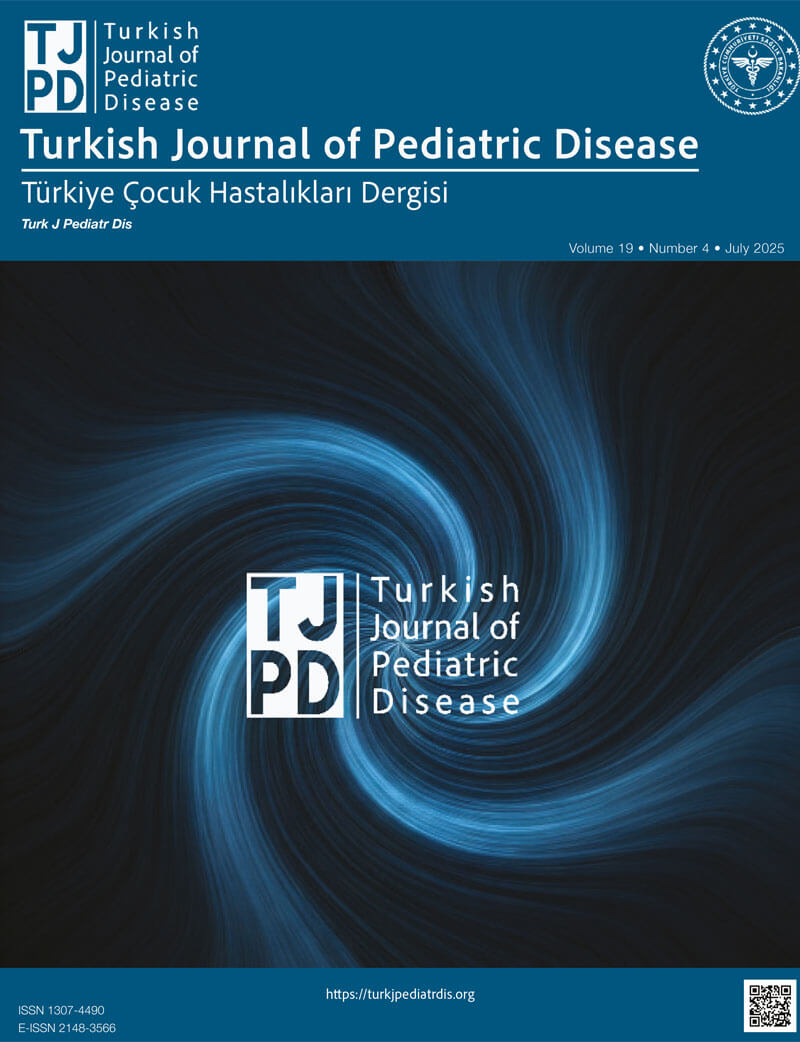Abstract
Objective: Carriers of hemophilia may have an increased bleeding tendency even if they have normal factor VIII levels. The aim of this study was to investigate the bleeding tendency with using a Bleeding Assessment Tool (BAT) in first-degree relatives of hemophilia A patients and to compare with women without family history of hemophilia or other bleeding disorders.
Material and Methods: First-degree relatives of hemophilia A patients (study group) were investigated prospectively evaluated and compared them with women without a family history of hemophilia or other bleeding disorders (controls group), including factor VIII levels, coagulation parameters and bleeding scores.
Results: The study included 30 women in the study group and 30 women in the control group. The mean FVIII levels in the study group and control group were 75.95±34.88 IU/m L and 112.83±25.44 IU/mL, respectively. In the study group, one woman had a moderate factor VIII deficiency (factor VIII level was 5 IU/mL). In addition, 4 women were found to have Factor VIII level between 5-39 IU/mL (24, 31, 36, and 39 IU/mL) which was compatible with mild factor VIII deficiency. Menorrhagia was the most common type of bleeding in the study group (83.3%), followed by cutaneous (60%) and oral cavity bleedings (56.6%). Menorrhagia, oral cavity bleeding and epistaxis were significantly more frequent in the study group compared to the control group (p<0.001, p<0.001, and p<0.001, respectively). No correlation was found between factor VIII level and bleeding score.
Conclusion: Our study showed that first-degree female relatives of hemophiliacs experienced at least one bleeding episode during their lifetime, regardless of factor VIII levels. Therefore, careful collection of bleeding histories in female relatives of hemophiliacs may help determine the necessary treatment methods to reduce mucosal and gynecologic bleeding.
Keywords: Bleeding tendency, Epistaxis, Hemophilia, Menorrhagia
References
- Mauser-Bunschoten EP. Symptomatic Carriers of Hemophilia. World Fed Hemoph. 2008;46. https://www1.wfh.org/publication/files/pdf-1202.pdf
- Kasper CK, Lin JC. Prevalence of sporadic and familial haemophilia. Haemophilia. 2007; 13: 90-9-2. https://doi.org/10.1111/j.1365-2516.2006.01397.x.
- Plug I, Mauser-Bunschoten EP, Bröcker-Vriends AH, van Amstel HK, van der Bom JG, van Diemen-Homan JE, et al. Bleeding in carriers of hemophilia. Blood. 2006;108(1):52-6. https://doi.org/10.1182/blood-2005-09-3879.
- Di Michele DM, Gibb C, Lefkowitz JM, Ni Q, Gerber LM, Ganguly A. Severe and moderate haemophilia A and B in US females. Haemophilia. 2014;20:e136-e143. https://doi.org/10.1111/hae.12364.
- Cygan PH, Kouides PA. Regulation and importance of factor VIII levels in hemophilia A carriers. Curr Opin Hematol. 2021;28:315-322.https://doi.org/10.1097/MOH.0000000000000667.
- Seck M, Faye BF, Sall A, Sy D, Touré SA, Dieng N, et al. Bleeding risk assessment in hemophilia A carriers from Dakar, Senegal. Blood Coagul Fibrinolysis. 2017; 28: 642-5. https://doi.org/10.1097/MBC.0000000000000653.
- Rodeghiero F, Tosetto A, Abshire T, Arnold DM, Coller B, James P, et al. ISTH/SSC bleeding assessment tool: a standardized questionnaire and a proposal for a new bleeding score for inherited bleeding disorders. J Thromb Haemost. 2010; 8: 2063-5. https://doi.org/10.1111/j.1538-7836.2010.03975.x.
- WFH Guidelines for the Management of Hemophilia 3rd Edition, Genetic Assessment, Accessed November 2024.
- van Galen KPM, d’Oiron R, James P, Abdul-Kadir R, Kouides PA, Kulkarni R, et al. A new hemophilia carrier nomenclature to define hemophilia in women and girls: Communication from the SSC of the ISTH. J Thromb Haemost. 2021;19:1883-7. https://doi.org/10.1111/jth.15397.
- Chaigneau M, Botros M, Grabell J, Hopman W, James P. Challenges and knowledge gaps facing hemophilia carriers today: Perspectives from patients and health care providers. Res Pract Thromb Haemost. 2022;20;6:e12783 https://doi.org/10.1002/rth2.12783.
- Paroskie A, Gailani D, DeBaun MR, Sidonio RF Jr. A cross-sectional study of bleeding phenotype in haemophilia A carriers. Br J Haematol. 2015; 170: 223-8.https://doi.org/10.1111/bjh.13423.
- Olsson A, Hellgren M, Berntorp E, Ljung R, Baghaei F. Clotting factor level is not a good predictor of bleeding in carriers of haemophilia A and B. Blood Coagul Fibrinolysis. 2014; 25: 471-5.https://doi.org/10.1097/MBC.0000000000000083.
- James PD, Mahlangu J, Bidlingmaier C, Mingot-Castellano ME, Chitlur M, Fogarty PF, et al. Evaluation of the utility of the ISTH-BAT in haemophilia carriers: a multinational study. Haemophilia. 2016; 22: 912-8.https://doi.org/10.1111/hae.13089.
- d’Oiron R, O’Brien S, James AH. Women and girls with haemophilia: Lessons learned. Haemophilia. 2021; 27: 75-81.https://doi.org/10.1111/hae.14094.
- Akdeniz N, Karakuş A, Yıldız İ, Ayyıldız MO. Evaluation of bleeding symptoms and laboratory parameters related to bleeding in sisters of patients with hemophilia A and B. Transfus Apher Sci. 2021; 60: 103044.https://doi.org/10.1016/j.transci.2020.103044.
- Mauser Bunschoten EP, van Houwelingen JC, Sjamsoedin Visser EJ, van Dijken PJ, Kok AJ, Sixma JJ. Bleeding symptoms in carriers of hemophilia A and B. Thromb Haemost. 1988;59:349-52.https://doi.org/10.1055/s-0038-1647493.
- Greer IA, Lowe GD, Walker JJ, Forbes CD. Haemorrhagic problems in obstetrics and gynaecology in patients with congenital coagulopathies. Br J Obstet Gynaecol. 1991; 98: 909-18. https://doi.org/10.1111/j.1471-0528.1991.tb13514.x .
- Osooli M, Donfield SM, Carlsson KS, Baghaei F, Holmström M, Berntorp E, et al. Joint comorbidities among Swedish carriers of haemophilia: A register-based cohort study over 22 years. Haemophilia. 2019; 25: 845-50. https://doi.org/10.1111/hae.13831.
- Miesbach W, Alesci S, Geisen C, Oldenburg J. Association between phenotype and genotype in carriers of haemophilia A. Haemophilia. 2011; 17: 246-51. https://doi.org/10.1111/j.1365-2516.2010.02426.x.
- Wang W, Jiang LJ, Cui DY, Zhang A, Wang X, Liu AG, et al. Clinical Analysis and Mental Health Survey of Hemophilia Carriers: a Cross-sectional Study. Curr Med Sci. 2024;44:435-440. https://doi.org/10.1007/s11596-024-2855-5.
Copyright and license
Copyright © 2025 The Author(s). This is an open access article distributed under the Creative Commons Attribution License (CC BY), which permits unrestricted use, distribution, and reproduction in any medium or format, provided the original work is properly cited.






